SensorNets 2009: The First International School on Cyber-Physical and Sensor Networks
Monastir, Tunisia, December 17-21, 2009
Location
The city of Monastir is located in the central eastern part of Tunisia on the Mediterranean coast. Located at 160 km from the capital (Tunis).

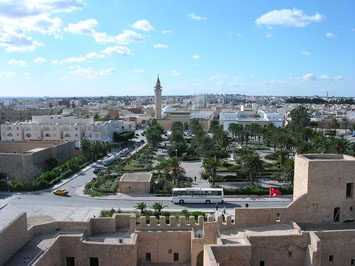
Monastir is a nice coastal resort, covering an area of 6,614 ha along a 6 km long shore.
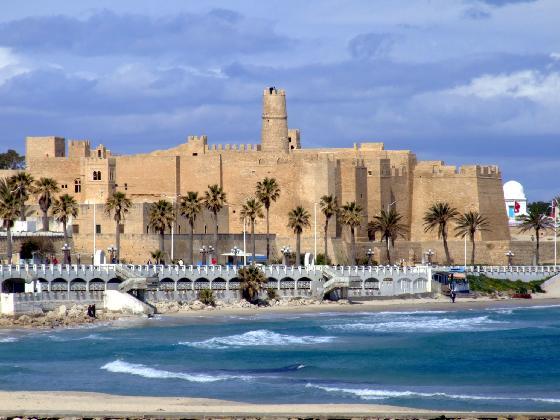
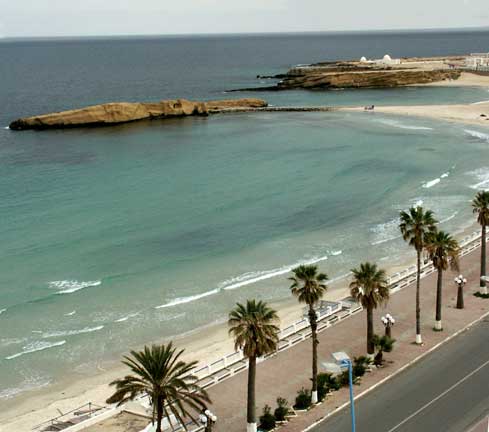
A bit of history ...
It is more than one thousand years old, and its history shows a rich succession of events witnessed by the tremendous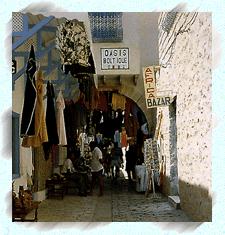 heritage we can enjoy today. Monastir witnessed the Paleolithic age. The archeological excavations in the region uncovered the existence of very ancient human activities dating back to the Aterian civilization covering the end of the middle Paleolithic age and the beginning of the upper Paleolithic one (from 35000 to 25000 years B.C.). Monastir, from the Latin word "Monasterium" or the Greek "Monasterion", refers to the ancient Ruspina, founded by the Phoenicians and more particularly the Tyrians in the 4th century B.C. Another history of the name of the city claims that The "monastery" after which the town was named, was built by an Islamic religious order in 797 to defend the town from roaming nomadic tribes and Byzantine warships. The fortress houses a lovely museum of Islamic art and artifacts.
heritage we can enjoy today. Monastir witnessed the Paleolithic age. The archeological excavations in the region uncovered the existence of very ancient human activities dating back to the Aterian civilization covering the end of the middle Paleolithic age and the beginning of the upper Paleolithic one (from 35000 to 25000 years B.C.). Monastir, from the Latin word "Monasterium" or the Greek "Monasterion", refers to the ancient Ruspina, founded by the Phoenicians and more particularly the Tyrians in the 4th century B.C. Another history of the name of the city claims that The "monastery" after which the town was named, was built by an Islamic religious order in 797 to defend the town from roaming nomadic tribes and Byzantine warships. The fortress houses a lovely museum of Islamic art and artifacts.
Monastir, Arab-Muslim city : the city of Monsatir was the first Arab and Muslim city built in "Ifriqiya" corresponding to the eastern part of North Africa, including Tunisia and the present Algeria. By the year 665 A.C. (year 45 of the Hegira), it became an external fortress to protect Kairouan, the capital. 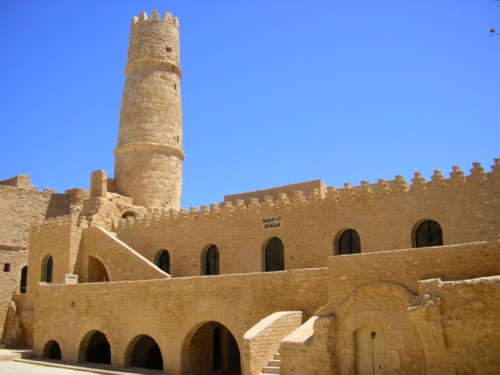 It was Herthouma Ibn El Aïoun, Governor of the Caliph Haroun Errachid who founded the Grand Ribat in Monastir in 796 A.C. (year 180 of the Hegira).
The Ribat of Monsatir became the most imposing defensive monument, thanks to extensions and fortifications made between the 15th and the 18th centuries. It was inhabited by the Mourabitines, volunteers of the Ribat. The Ribat of Monastir is is today the most ancient and best preserved fort in the Maghreb. Its Nador, or control tower overhangs at a height of twenty meters, the Ribat courtyard bordered by three levels of cells. Once on top of the Nador, one can admire the splendid cornice of Monastir.
It was Herthouma Ibn El Aïoun, Governor of the Caliph Haroun Errachid who founded the Grand Ribat in Monastir in 796 A.C. (year 180 of the Hegira).
The Ribat of Monsatir became the most imposing defensive monument, thanks to extensions and fortifications made between the 15th and the 18th centuries. It was inhabited by the Mourabitines, volunteers of the Ribat. The Ribat of Monastir is is today the most ancient and best preserved fort in the Maghreb. Its Nador, or control tower overhangs at a height of twenty meters, the Ribat courtyard bordered by three levels of cells. Once on top of the Nador, one can admire the splendid cornice of Monastir.
The policy of the French protectorate (1881-1956) aimed at recreating the ancient Roman "Hadrumetum", which favored the city of Sousse at the expense of Monastir. The "Monsatir" region was then divided into several Kaidats/counties and the city of Monastir was economically isolated due to the remoteness of railways and the progressive oblivion of its port. Its internal rampart was demolished in 1903 and its shops in 1926. The city of Monastir then faced a harsh economic, social and urban recession that lasted for more than three quarters of a century.
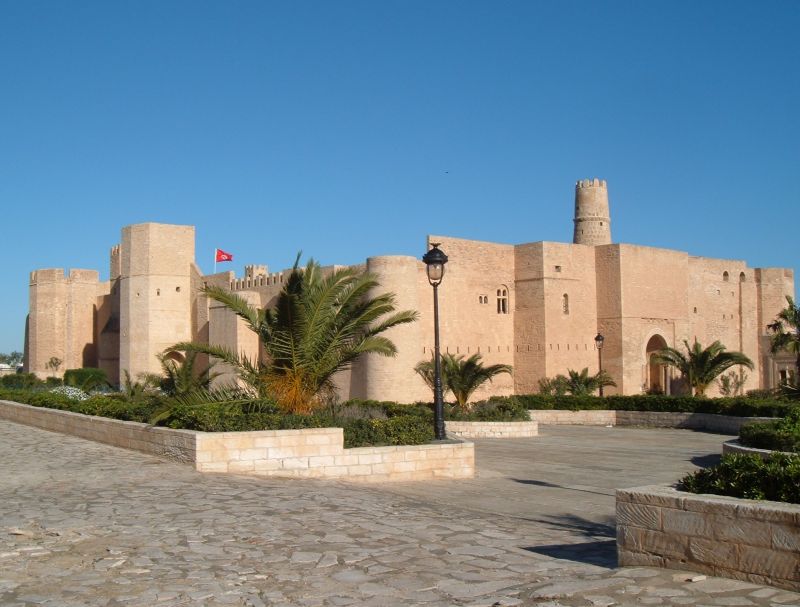
General Co-Chairs
-
Mohamed Abid
-
David Simplot-Ryl
(IRCICA/LIFL, France)
Program Co-Chairs
-
Anis Koubâa
-
Habib M. Ammari
(WiSeMAN Research Lab, Hofstra University, USA)
Publicity Co-Chairs
-
Petr Jurcik
Nuno Pereira
Marco Zuniga
Posters & Demos Co-Chairs
-
Mounir Frikha
-
Ye-Qiong Song
Awards Co-Chairs
-
Habib Youssef
(Prince Research Unit, Tunisia)
-
Bjorn Andersson
(CISTER Research Unit, Portugal)
Awards Sponsor Chair
-
Mohssen Alabbadi
(KACST, Saudi Arabia)

Contact Information
-
Anis Koubâa
aska at isep dot ipp dot pt
More ...